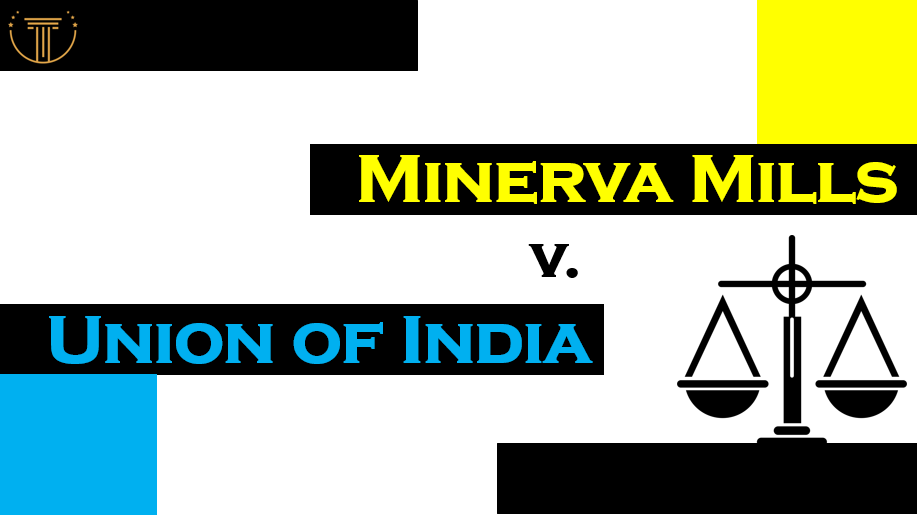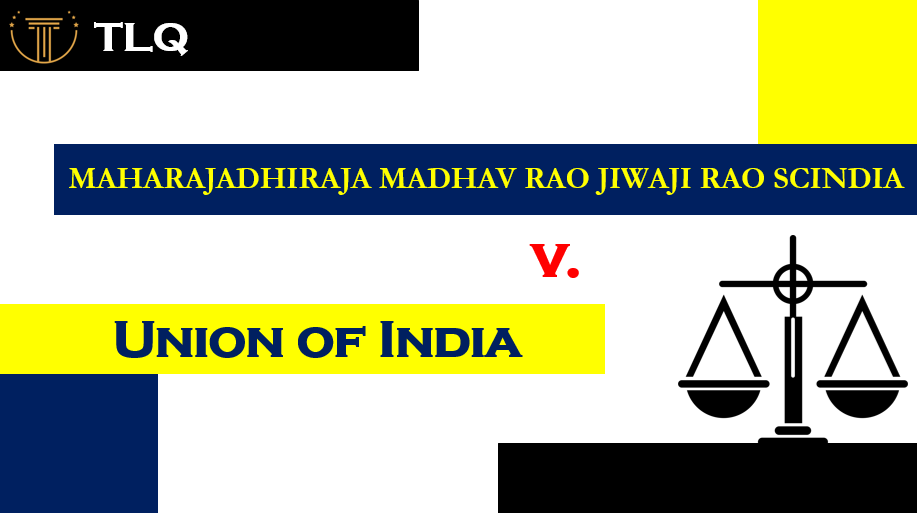Published On: 18th February, 2024
Authored By: Sneh Singh
Babasaheb Bhimrao Ambedkar University (A Central University), Lucknow
Citation: (AIR 2018 SC 4321, (2018) 10 SCC 1)
BACKGROUND:
On April 27, 2016, five people petitioned the Supreme Court, questioning the legality of Section 377 of the Indian Penal Code. The petitioners stated that the concerns highlighted in their appeal differed from those raised in the pending curative petition in the 2013 Koushal v. Naz case, in which the Supreme Court maintained Section 377’s validity. The Naz had previously been sent to a five-judge bench to determine whether the curative plea could be heard. Dancer Navtej Singh Johar, businesswoman Ayesha Kapur, hoteliers Aman Nath and Keshav Suri, writer Sunil Mehra, and chef Ritu Dalmia were among the petitioners.
This was the first case in which the petitioners asserted that they had all been directly harmed by Section 377, which they claimed was a direct infringement of their fundamental rights. Apostolic Alliance of Churches, Utkal Christian Council, and Trust God Ministries led the resistance to the decriminalisation of petitions. The first two were represented by Advocate Manoj George, and the third by Senior Advocate KS Radhakrishnan. The NDA government took a neutral approach, deferring to the “wisdom of the court” as long as the ruling was limited to “consensual acts of adults in private.”
FACTS:
The central issue in this case was the constitutionality of Section 377 of the IPC, which dealt with “unnatural offences” and criminalized “carnal intercourse against the order of nature” inasmuch as it affected consenting same-sex relationships. The High Court of Delhi declared in 2009 that Section 377 was unconstitutional in the Naz Foundation case, which was overturned by the Supreme Court in Suresh Kumar Koushal. In 2016, the Petitioner, Navtej Singh Johar, filed a writ petition before the Supreme Court’s three-judge bench, contesting the Court’s ruling in Suresh Kumar Koushal and the legality of Section 377. Given the gravity of the situation, the case was referred to a five-judge panel.
MAIN ISSUES:
- Whether Section 377 of the IPC breached the right to equality granted by Article 14 of the Constitution, the freedom of speech and expression guaranteed by Article 19, the right to privacy, and the right to live in dignity guaranteed by Article 21 of the Constitution?
- Is it arbitrary to criminalise consensual relationships as being against the order of nature under Section 377 of the IPC?
- Is it a violation of Article 15 of the Constitution for the law to discriminate against people based on their sexual orientation?
ARGUMENTS MADE:
Appellant Side-
- The petitioners argued that sexual orientations other than heterosexuality and bisexuality were normal, founded on consent, and not caused by medical or mental illnesses.
- The petitioners further argued that criminalising sexual orientations went against Article 21’s right to privacy as well as the ideas of individual dignity and decision-making liberty that are ingrained in every person’s nature.
- The petitioners argued that the rights of the LGBT community, which makes up about 7-8% of India’s population, ought to be acknowledged and safeguarded.
- The argument that Section 377 was unconstitutional was based on the Puttaswamy case. It was argued that the LGBT community was discriminated against based on their sexual orientation, which is a fundamental right protected by Articles 14, 19, and 21.
- Sexual orientation and privacy are fundamental attributes of privacy. The right to sexuality, sexual autonomy, and the freedom to select a partner are all considered rights that should be recognised as part of the Article 21 right to life.
Respondent Side-
- The Respondents stated that they will defer to the Court’s judgement in matters pertaining to the “consensual acts of same-sex adults in private” and the constitutional legitimacy of Section 377.
- Because Section 377 facilitated “a compelling state interest to reinforce morals in public life,” certain intervenors argued in favour of its continuation.
- The Intervenors contended that while fundamental rights were not unassailable, Section 377 was not discriminatory since it “criminalises acts and not people” and that it applied to all unnatural sexual behaviour, regardless of sexual orientation, and that it outlawed certain types of carnal intercourse between heterosexual and homosexual couples.
JUDGEMENT:
- No matter how small the LGBT community is, they have the right to privacy, which includes physical intimacy. Their choice of partner may differ, but that does not mean they will be prosecuted. Section 377 infringes on their human dignity and personal freedom, infringing on their right to privacy under Article 21.
- The fundamental goal of preserving Section 377 is to protect women and children from being mistreated and harassed by carnal intercourse, although consensual carnal intercourse done by the LGBT community is not harmful to children or women. Furthermore, non-consensual activities have already been referred to as an offence by section 375 of the IPC, implying that section 377 is redundant and discriminatory towards one segment of society, and thus violates Article 14 of the Indian Constitution, rendering it unconstitutional.
- Because our constitution is liberal, it is unlikely that the right to choose will be absolute. As a result, various constraints have been placed on the idea of choice. However, the right to choose a partner for intimate interactions is wholly personal and cannot be regulated. Section 377 of the Indian Penal Code, on the other hand, inhibits the right of the LGBT community to choose a sexual partner and is thus irrational and arbitrary. Public order, decency, and morality are the justifications for justifiable restrictions on the fundamental right to express oneself. Any act of affection performed in public by the LGBT community does not disrupt public order or moral norms as long as it is polite and not obscene. Section 377, on the other hand, is illegal in the sense that it does not meet the proportionality criteria and violates the basic freedom of LGBT groups to express themselves.
- The Court relied on the ‘principles of transformative constitutionalism and progressive realisation of rights’ in its decision, holding that the constitution must steer society’s evolution from an archaic to a pragmatic society where fundamental rights are fiercely defended. It went on to say that constitutional morality would take precedence over societal morality and that homosexuality was not an aberration, but rather a variety in an individual’s sexual preference.
- As a result, the Supreme Court found that section 377 is unconstitutional since it breaches Articles 14, 15, 19, and 21 of the Indian Constitution, and therefore overturned the decision in Suresh Koushal and others v. Naz Foundation and others. Furthermore, it said that Section 377 shall only apply to non-consensual sexual activities done against any adult or kid.
IMPACT OF JUDGEMENT:
- The decision relied on the concept of transformative constitutionalism, which paved the way for a slew of important legislative modifications and reformations. It is a watershed moment in the country’s history because it not only validates the identity of individuals in the LGBT community but also grants them global acceptability by society.
- Following this relief through a landmark decision, the next battle in the legal arena would be for social and economic provisions for such individuals, including the freedom to marry someone of the same sex or anybody of their choosing.
CONCLUSION:
The landmark case of Navtej Singh Johar v. Union of India concluded in a historic victory for equality, human rights, and the LGBTQ+ community in India. The unanimous ruling of the Supreme Court’s Constitution Bench on September 6, 2018, represented a seismic shift in the legal landscape, effectively ending the prohibition of consenting same-sex relationships under Section 377 of the Indian Penal Code.
The essence of the finding was the recognition and confirmation of fundamental rights given by the Indian Constitution to all people, regardless of sexual orientation, as protected by the Indian Constitution. In his decision, Chief Justice Dipak Misra emphasised the underlying link between Article 21’s right to privacy, dignity, and personal liberty. By decriminalising consensual same-sex relationships, the Court recognised individuals’ freedom to live true lives free of societal prejudice and discrimination.
The decision emphasised the equality values entrenched in Article 14 of the Constitution, condemning any kind of discrimination based on sexual orientation. The Court acknowledged that the LGBTQ+ community, like any other segment of society, needed equal protection under the law, and that their right to live with dignity was unassailable.
By directly reversing its previous decisions in Bowers v. Hardwick and Suresh Kumar Koushal v. Naz Foundation, the Court signalled a break with previous jurisprudence that had affirmed Section 377’s validity. This reversal represented a growing view of constitutional rights, realising that the law must adapt to changing societal norms and recognise all individuals’ intrinsic dignity.
The case’s outcome did more than just overturn a legal requirement; it sparked a broader societal debate about acceptance, inclusivity, and the protection of fundamental rights. The decision had an impact outside of the judicial system, exposing ingrained stereotypes and helping to a more progressive and inclusive India.
However, the ending also signalled the start of a new advocacy journey. Social stigma, prejudice, and the necessity for legal acknowledgement of same-sex weddings remained obstacles. Activists and activists capitalised on the judgment’s momentum, calling for additional legal reforms and societal acceptance to ensure the full realisation of LGBTQ+ rights in India.
In essence, the decision in Navtej Singh Johar v. Union of India was a resounding affirmation of the principles of equality, dignity, and human rights for all individuals, regardless of sexual orientation, and it laid the groundwork for a more inclusive and equitable future.
REFERENCES:
- https://privacylibrary.ccgnlud.org/case/navtej-singh-johar-and-ors-vs-union-of-india-uoi-and-ors
- https://globalfreedomofexpression.columbia.edu/cases/navtej-singh-johar-v-union-india/
- https://en.wikipedia.org/wiki/Navtej_Singh_Johar_v._Union_of_India
- https://www.legalserviceindia.com/legal/article-6841-summary-of-navtej-singh-johar-v-s-union-of-india.html
- https://indiankanoon.org/doc/168671544/


